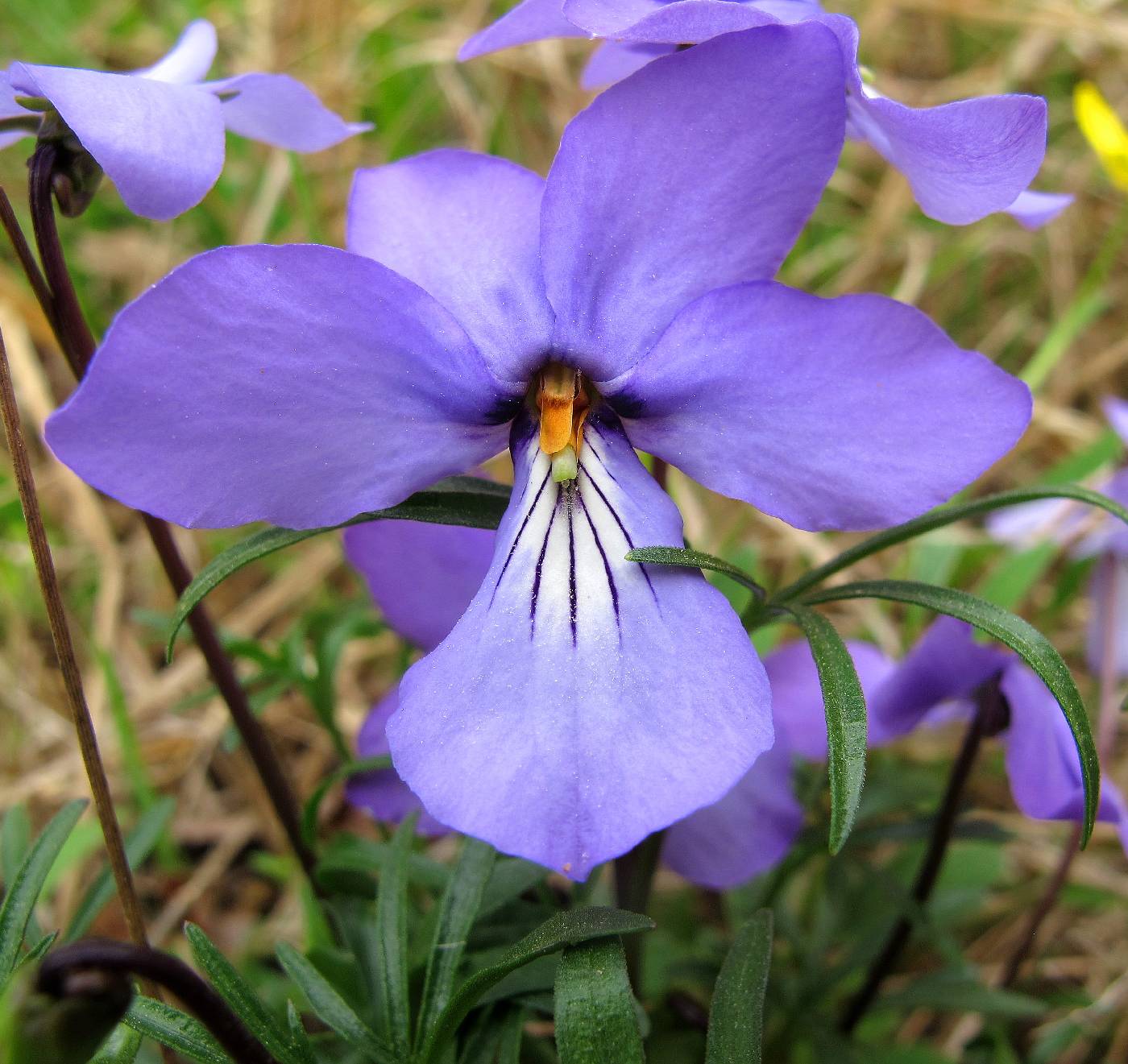Viola
|
Family: Violaceae |
PLANT: Caulescent or acaulescent annual or perennial herbs. LEAVES: simple, dissected or compound, basal, cauline or both, stipulate, petiolate, alternate or opposite. INFLORESCENCE: flowers solitary, axillary or scapose. FLOWERS: sepals subequal, auriculate at base; petals unequal, the lower petal shorter or longer than others, the base elongated into a spur or gibbous on underside; lateral 2 petals generally spreading, generally bearded at base; upper 2 petals equal, erect or spreading; lower 2 stamens with nectaries projecting into the spur or sac; cleistogamous flowers present in many spp. FRUITS: ovoid to oblong, glabrous or hairy. SEEDS ca. 15‑20, usually ovoid, with a prominent caruncle. NOTES: Ca. 400 spp.; worldwide. (Latin: Viola, a classical name.) Clausen, J. 1964. Madroño 17:173‑197. REFERENCES: Little, R. John. Violaceae. 2001. J. Ariz. - Nev. Acad. Sci. Volume 33(1). Sep usually with posterior auricles; pet somewhat unequal, the 2 lateral ones often bearded internally at the base, the lower one usually with a basal spur or sac and sometimes bearded at the throat; stamens 5, the 2 lowermost bearing appendages that extend into the spur of the lower pet; ours herbs with axillary or basal 1-fld peduncles bearing 2 small bracts near the middle. Most spp. produce normal petaliferous fls in spring, and very fertile cleistogamous fls in summer. All spp. with cyanic (rather than yellow) fls produce occasional white-fld forms. Hybrids between closely related spp. are common, and spp. 3-8 form an intergrading polyploid complex. 400, mainly N. Temp. Gleason, Henry A. & Cronquist, Arthur J. 1991. Manual of vascular plants of northeastern United States and adjacent Canada. lxxv + 910 pp. ©The New York Botanical Garden. All rights reserved. Used by permission. |

